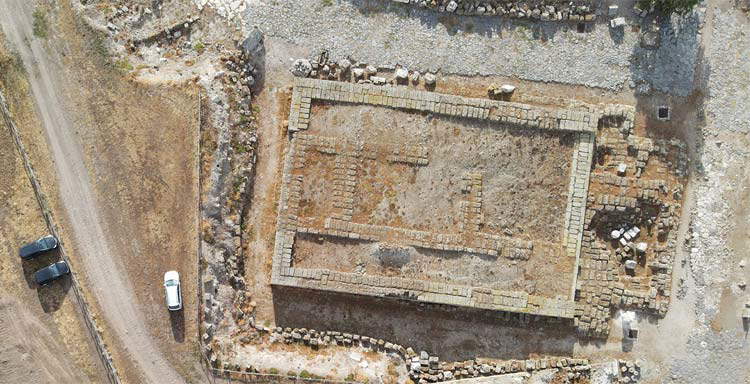Vulci, new Etruscan temple discovered: it is one of the largest known
Important discovery at the archaeological site of Vulci (Montalto di Castro, Viterbo), where, near the Great Temple, another temple, hitherto unknown, and considered by experts to be one of the largest known Etruscan sacred buildings, has been identified. The discovery bears the signature of an interdisciplinary team led by archaeologists Mariachiara Franceschini of the “Albert-Ludwigs” University of Freiburg and Paul P. Pasieka of the “Johannes Gutenberg” University of Mainz. The building is 45 by 35 meters in size and is located west of the Great Temple, which was first excavated in the 1950s. The discovery is part of the Vulci City scape project that started in 2020 with the aim of studying the settlement strategies and urban structures of the city of Vulci.
The newly discovered temple is roughly the same size and orientation as the nearby Great Temple and was built around the same time, in the Archaic period (late sixth to early fifth century B.C.). Scholars arrived at the date after examining the foundation layers of the northeast corner of the temple and the objects found there (mainly pottery and ceramics). “The new temple is roughly the same size and stands on a similar alignment as the nearby Great Temple, and was built around the same time,” Franceschini explains. “This duplication of monumental buildings in an Etruscan city is rare and indicates an exceptional find,” Pasieka adds. “We have examined the entire northern area of Vulci, that is 22.5 hectares, with geophysical and georadar prospecting, and we have discovered remains of the early city that were previously missing in Vulci, and now we can better understand the dynamics of settlement and identify the road systems and different functional areas of the city.”
The area of the “New Temple,” as it was renamed, had already been identified in 2020 after some geographical prospecting that led to the discovery of the northeast corner of the cella and the podium wall, as well as adjacent areas. After that, researchers were able to uncover the first solid tuff wall sections of the ancient temple in 2021, and spent several months studying the unearthed material. Then, in mid-November this year, the official announcement of the discovery with a joint note from the two German universities. “Our knowledge of the appearance and organization of Etruscan cities is still very limited,” Franceschini stressed. “But the intact layers of the temple give us an idea of the development of one of the most important Etruscan metropolises over a period of a thousand years.” Over the next few years, scholars will work to examine more closely the phases of use and the exact architectural appearance of the temple in order to learn more about Etruscan religion, Vulci’s social structure and the living realities of its inhabitants.
The excavations are supported by the Fritz Thyssen Foundation (for 2020-2022) and the Gerda Henkel Foundation (for 2022-2023), as well as the University of Mainz. The Department of Classical Archaeology of the “Albert-Ludwigs” University of Freiburg and the Department of Classical Archaeology of the “Johannes Gutenberg” University of Mainz are collaborating with the Vulci Foundation, which manages the Vulci Archaeological Park, and with the Soprintendenza Archeologia, Belle Arti e Paesaggio for the province of Viterbo and southern Etruria.
 |
| Vulci, new Etruscan temple discovered: it is one of the largest known |
Warning: the translation into English of the original Italian article was created using automatic tools. We undertake to review all articles, but we do not guarantee the total absence of inaccuracies in the translation due to the program. You can find the original by clicking on the ITA button. If you find any mistake,please contact us.




























